 Albert Camus' fatal 1960 auto accident may have been a KGB assassination. 
Italian author Giovanni Catelli has just published a book that claims French writer Albert Camus was assassinated by the KGB, rather than dying in an auto accident, as largely believed. When you say the words “Cold War intrigue,” we're all in, so the story caught our eye. Catelli's theory, which he first began airing in 2011, is that the KGB silenced Camus because he was a globally famous figure who made a habit of criticizing the Soviet Union. The order was allegedly given by Dmitri Shepilov, the USSR’s minister of internal affairs, after Camus slammed him in the French newspaper Franc-Tireur in March 1957. Camus died in 1960, so the killing took three years to come to fruition, according to Catelli.
His book length argument, La mort de Camus, is getting white hot press right now, however it's very interesting to look back at contemporary articles about the crash. Camus was riding as a passenger in a car driven by his publisher Michel Gallimard, with Gallimard's wife Janine and their daughter Anne in the rear seat. Michel Gallimard died, but his wife and daughter survived to 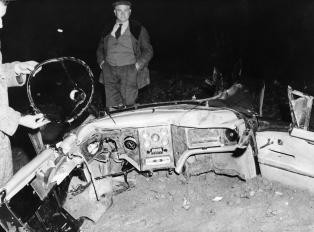 describe the crash. Michel was driving fast and had been told to slow down, and had drunk wine at dinner. describe the crash. Michel was driving fast and had been told to slow down, and had drunk wine at dinner. A gander at the wreckage of the heavy Farcel Vega HK500 attests to its speed. We checked the various articles popping up online and found none that mentioned either the velocity of the car or the drinking of the driver, but that's how the internet works—a fantastic claim circles the world five times faster than anything resembling balance or a fact check.
Catelli, though, has an answer for the reckless driving theory—the Soviets had attached a device to the car that would puncture a tire only in the event of sufficient speed. If the Soviets came up with the device described, it would not kick in without the added ingredient of driver haste, which often happens in conjunction with alcohol consumption, which in turn is a near certainty when talking about French people, all of which means the chances of a crash with muddied circumstances were pretty high. The device, if it ever existed, was certainly clever. It would be like a device that tied your shoelaces together, but only if you went downstairs in a rush, and you happened to live in a fourth floor flat with a balky elevator.
Catelli's belief that Camus was disposed of via assassination is bolstered by the fact that the car he was riding in somehow careened off a stretch of straight road thirty feet wide. Nobody described Michel Gallimard trying to dodge a hedgehog or pothole, so despite speed and possible drunkenness, some unforeseen factor seems required to send the vehicle into the weeds. On the other hand, three years is a long time to enact a death plot. We've seen Yankees and Red Sox fans patch their shit up in less time. But let's move this death from the settled bin into the mysterious bin, which is where we like everything to be anyway. Camus, the famed absurdist, once wrote that, “There can be nothing more absurd than to die in a car accident.” And if Catelli is correct, nothing can be more convenient either. 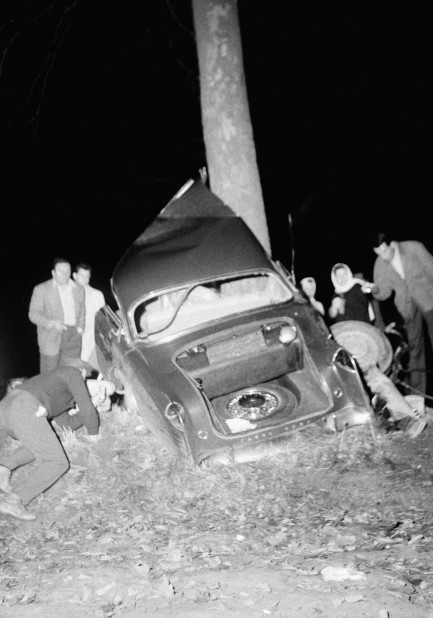 
 Section of CIA trove of declassified material reveals research into psychic phenomena. 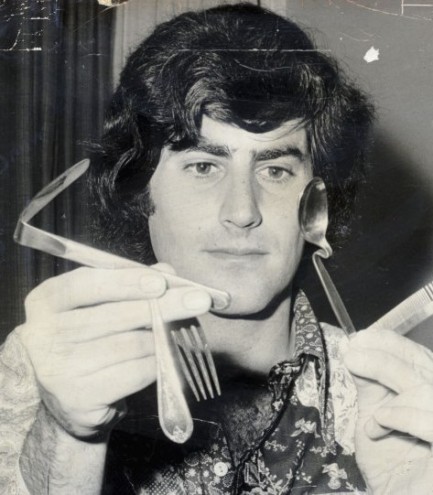
The Central Intelligence Agency has just published 800,000 formerly classified files online. The data dump, comprising some 13 million separate documents, isn't technically new. The files had been declassified years ago, but had only been available at the National Archives in Maryland, on only four computers tucked away at the back of the building which were accessible only during business hours. A freedom-of-information group called MuckRock sued the CIA and forced it to upload the collection, and the process took more than two years. Among the discoveries in the trove are documents related to the Stargate Project, which was tasked with examining psychic phenomena. A subset of those investigations involved celebrity paranormalist Uri Geller in 1973. For those who don't know, Geller is a guy who used to show up on television programs like The Tonight Show and perform various paranormal tricks. His fame drew the roving gaze of the CIA, and they had him come in for a series of tests. No word on whether he had a choice in the matter. The testers ultimately reached the conclusion that Geller was legit, stating in the declassified dox that he had, “demonstrated his paranormal perceptual ability in a convincing and unambiguous manner.” How did they reach that conclusion? Through double blind experiments, one of which involved sealing Geller in a room, having a worker make a drawing, and asking Geller to recreate the drawing without having seen it. The images above and below show three of the original drawings, and Geller's eerily accurate renderings. Through double blind experiments, one of which involved sealing Geller in a room, having a worker make a drawing, and asking Geller to recreate the drawing without having seen it. The images above and below show three of the original drawings, and Geller's eerily accurate renderings. Geller made a nice career for himself finding hidden objects, bending spoons, and reproducing hidden sketches, but the really interesting part is he may have been a spy. In 2013, a BBC documentary titled The Secret Life of Uri Geller–Psychic Spy? claimed Geller worked for the CIA, was recruited by Mossad, and performed such missions as using only the power of his mind to erase floppy discs carried by KGB agents. Geller allegedly spent years in Mexico working as security for President José López Portillo, and the aforementioned documentary suggests he was also involved in some capacity in the famed Israeli hostage rescue in Entebbe, Uganda in 1976. It may take a few more CIA declassifications before we get to the bottom of all that. Geller is still around at age seventy (looking about fifty, which might the most convincing evidence yet of his paranormal ability) and he still appears in news reports for antics such as purchasing Lamb Island, off the eastern coast of Scotland, which was the site of many witch trials, and for building a 12 foot-tall statue of a gorilla made from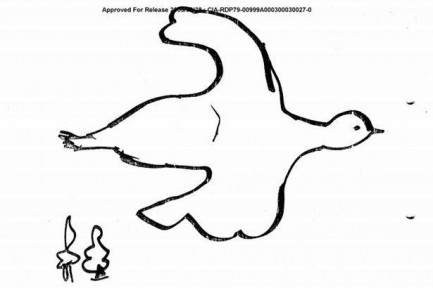 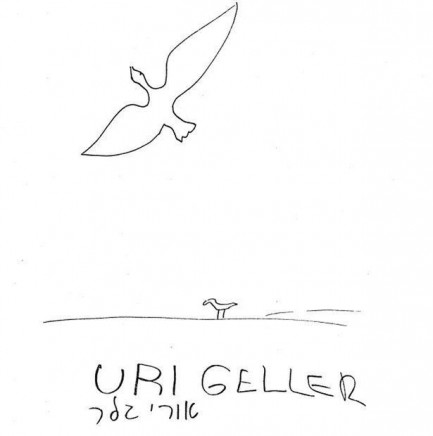 40,000 metal spoons. We aren't believers in psychic ability or any form of the paranormal. And we won't be unless we see evidence proving these realms exist. But the CIA said Geller was the real deal, so that's worth something. Of course, they also said Iraq had a nuclear weapons program, so maybe their opinion should be taken with a grain of salt. 40,000 metal spoons. We aren't believers in psychic ability or any form of the paranormal. And we won't be unless we see evidence proving these realms exist. But the CIA said Geller was the real deal, so that's worth something. Of course, they also said Iraq had a nuclear weapons program, so maybe their opinion should be taken with a grain of salt.
|
 |

The headlines that mattered yesteryear.
2003—Hope Dies
Film legend Bob Hope dies of pneumonia two months after celebrating his 100th birthday. 1945—Churchill Given the Sack
In spite of admiring Winston Churchill as a great wartime leader, Britons elect
Clement Attlee the nation's new prime minister in a sweeping victory for the Labour Party over the Conservatives. 1952—Evita Peron Dies
Eva Duarte de Peron, aka Evita, wife of the president of the Argentine Republic, dies from cancer at age 33. Evita had brought the working classes into a position of political power never witnessed before, but was hated by the nation's powerful military class. She is lain to rest in Milan, Italy in a secret grave under a nun's name, but is eventually returned to Argentina for reburial beside her husband in 1974. 1943—Mussolini Calls It Quits
Italian dictator Benito Mussolini steps down as head of the armed forces and the government. It soon becomes clear that Il Duce did not relinquish power voluntarily, but was forced to resign after former Fascist colleagues turned against him. He is later installed by Germany as leader of the Italian Social Republic in the north of the country, but is killed by partisans in 1945.
|

|
|

It's easy. We have an uploader that makes it a snap. Use it to submit your art, text, header, and subhead. Your post can be funny, serious, or anything in between, as long as it's vintage pulp. You'll get a byline and experience the fleeting pride of free authorship. We'll edit your post for typos, but the rest is up to you. Click here to give us your best shot.

|
|


 describe the crash. Michel was driving fast and had been told to slow down, and had drunk wine at dinner.
describe the crash. Michel was driving fast and had been told to slow down, and had drunk wine at dinner.



 Through double blind experiments, one of which involved sealing Geller in a room, having a worker make a drawing, and asking Geller to recreate the drawing without having seen it. The images above and below show three of the original drawings, and Geller's eerily accurate renderings.
Through double blind experiments, one of which involved sealing Geller in a room, having a worker make a drawing, and asking Geller to recreate the drawing without having seen it. The images above and below show three of the original drawings, and Geller's eerily accurate renderings.
 40,000 metal spoons. We aren't believers in psychic ability or any form of the paranormal. And we won't be unless we see evidence proving these realms exist. But the CIA said Geller was the real deal, so that's worth something. Of course, they also said Iraq had a nuclear weapons program, so maybe their opinion should be taken with a grain of salt.
40,000 metal spoons. We aren't believers in psychic ability or any form of the paranormal. And we won't be unless we see evidence proving these realms exist. But the CIA said Geller was the real deal, so that's worth something. Of course, they also said Iraq had a nuclear weapons program, so maybe their opinion should be taken with a grain of salt.










































































